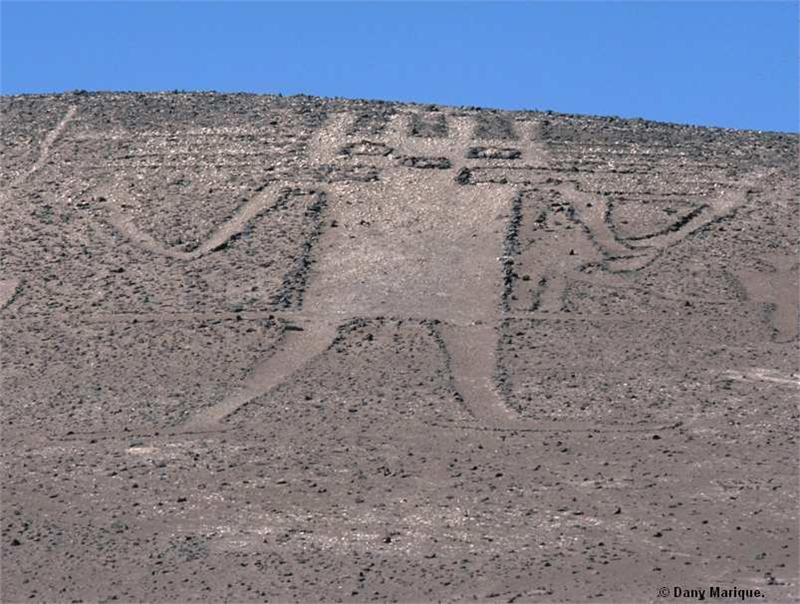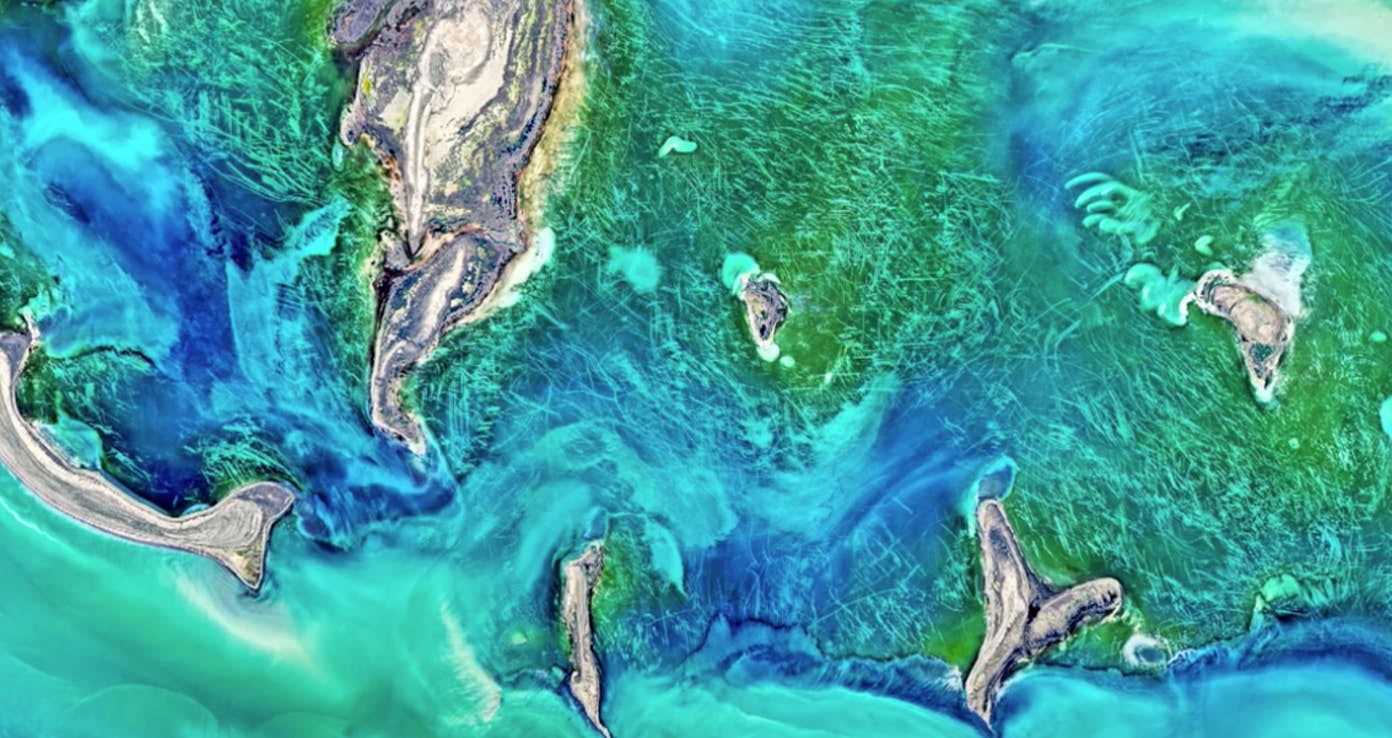9. The Atacama Glyphs

Enormous glyphs, the largest of which is almost 300 feet long, were once carved into Chile’s Atacama desert.
The largest is known as the Atacama Giant, and it looks more or less like a human being, albeit one with really skinny legs and arms.
There are over 5,000 glyphs carved into the harsh, vast landscape that is the Atacama Desert. It has been suggested that aliens created them, but the fact of the matter is that the glyphs were likely carved by various cultures who made the Atacama Desert home over the course of several hundreds of years, starting in about 1000 AD.
The Atacama Giant is likely the depiction of a deity who was worshiped by one of those cultures. Other glyphs may have served to point out the locations of water sources and other necessities.
The Atacama Desert, which also extends into portions of Peru, Bolivia, Chile, and Argentina is actually one of the driest places on Earth, which completely explains why people living there would need the glyphs to point out sources of water.
In fact, with the exception of polar deserts, it is the driest desert on our planet.
10. The Caspian Sea’s Underwater Streaks

For a while there, scientists were perplexed by strange lines crisscrossing the waters North Caspian Sea’s coast.
The Caspian Sea—famous for being the Earth’s largest lake—has coastlines shared by numerous countries, including Iran, Kazakhstan, and Russia.
Images of mysterious and gigantic lines and marks—thousands of them—were once speculated to be caused by plant life in the sea. Unfortunately for conspiracy theorists, it has never been suggested that they were created by aliens or cultists.
The fact of the matter is that ice is the culprit. It forms on the sea in the winter; as the result of wind, it then scrapes the sea bed. The ice melts and disappears, but the scrapes do not.
The cause of the scrapes is not terribly interesting, perhaps; but the end result of the ice is quite pretty to look at via satellite.

Leave a Comment